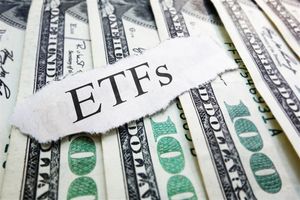
Federal Reserve Chair Jerome Powell delivered a sobering message to financial markets on October 29, 2025, casting a significant shadow of doubt over expectations for a December interest rate cut. His remarks, made following the Federal Open Market Committee's (FOMC) decision to implement its second rate reduction of the year, sent ripples across global equities and bond markets, signaling a more cautious and data-dependent approach to monetary policy than many had anticipated.
The Fed's latest move saw the federal funds rate target range lowered by 25 basis points to 3.75%–4.00%, a decision largely priced in by investors. However, it was Powell's subsequent press conference that truly captured market attention. He explicitly stated that a December rate cut is "far from a done deal" and "not a foregone conclusion," emphasizing the "strongly different views" among FOMC members regarding the appropriate path forward. This unexpected level of uncertainty has forced investors to recalibrate their expectations, highlighting the complex balancing act the central bank faces amidst a weakening labor market and persistent inflationary pressures.
The Fed's Tightrope Walk: Balancing Inflation and Employment
The October 29, 2025, FOMC meeting concluded with the widely expected 25-basis-point rate cut, marking the second consecutive reduction after a similar move in September. This easing was a response to growing concerns over a softening labor market and slower economic growth. However, the accompanying commentary from Chair Powell underscored the deep divisions within the committee and the myriad of economic headwinds influencing their decisions.
Powell pointed to a "challenging situation" characterized by a weakening labor market, even as he noted that interest rates are now "meaningfully less tight," which should offer some support. Simultaneously, he highlighted persistent inflation, complicated by the potential impact of tariffs, which he suggested could temporarily add 0.20-0.40 percentage points to inflation figures. The ongoing federal government shutdown has further exacerbated the Fed's challenge by limiting the availability of crucial economic data, making informed decision-making even more difficult. Dissenting votes within the FOMC, with one member advocating for a larger cut and another for no change, vividly illustrate the internal struggle to forge a consensus on the optimal monetary policy trajectory.
Initial market reactions were swift and telling. Major stock indexes, including the S&P 500 (SPX), Dow Jones Industrial Average (DJIA), and Nasdaq Composite (IXIC), which had seen intraday gains, reversed course and turned lower following Powell's remarks. The 10-year Treasury yield also rose, reflecting investor concern and a shift in expectations for future rate cuts. Prior to Powell's press conference, traders had assigned an approximately 90% probability to a December rate cut; this figure sharply declined to an estimated 71-82% in the immediate aftermath, signaling a significant recalibration of market sentiment.
Corporate Crossroads: Who Wins and Who Loses from Prolonged Uncertainty
The Federal Reserve's cautious stance on a December rate cut, articulated by Chair Powell, creates a complex landscape for public companies, with clear winners and losers emerging from the prolonged period of interest rate uncertainty. Companies with substantial debt or those reliant on consumer financing will likely face continued headwinds, while others may find unexpected stability.
Potential Losers:
- Real Estate and Construction: Companies like Lennar Corporation (NYSE: LEN) and D.R. Horton, Inc. (NYSE: DHI), along with commercial real estate investment trusts (REITs) such as Simon Property Group (NYSE: SPG), could face sustained pressure. Higher-for-longer interest rates translate to increased borrowing costs for developers and higher mortgage rates for consumers, dampening demand for new homes and commercial properties.
- High-Growth Technology Companies: Many tech firms, particularly those not yet profitable or heavily reliant on venture capital and debt for expansion, like Snowflake Inc. (NYSE: SNOW) or Palantir Technologies Inc. (NYSE: PLTR), often see their valuations compressed in a higher interest rate environment. Their future earnings are discounted more heavily, and borrowing for growth becomes more expensive.
- Consumer Discretionary: Businesses that sell non-essential goods and services, such as retailers like Target Corporation (NYSE: TGT) or restaurant chains like Starbucks Corporation (NASDAQ: SBUX), could see reduced consumer spending if higher rates lead to tighter household budgets and increased economic uncertainty.
Potential Winners (or those less impacted):
- Banks and Financial Institutions: Large banks like JPMorgan Chase & Co. (NYSE: JPM) and Bank of America Corporation (NYSE: BAC) often benefit from a higher interest rate environment, as it can expand their net interest margins (NIM) – the difference between the interest they earn on loans and pay on deposits. However, a weakening economy could offset some of these gains.
- Utilities and Consumer Staples: Companies in defensive sectors, such as utility providers like NextEra Energy, Inc. (NYSE: NEE) or consumer staples giants like The Procter & Gamble Company (NYSE: PG), tend to be more resilient during periods of economic uncertainty. Their stable demand and predictable earnings make them attractive to investors seeking safety.
- Companies with Strong Balance Sheets: Businesses with low debt levels and robust cash flows are better positioned to weather prolonged periods of higher interest rates. They have greater flexibility to invest and can even acquire distressed competitors at attractive valuations.
The uncertainty surrounding future rate cuts means that companies must continue to prioritize financial discipline, manage debt effectively, and focus on operational efficiency to navigate the evolving economic landscape.
Broader Implications: Navigating the Shifting Economic Tides
Jerome Powell's cautionary remarks regarding a December rate cut resonate far beyond immediate market fluctuations, signaling a broader recalibration of economic expectations and fitting into a pattern of heightened global economic uncertainty. This event underscores the Federal Reserve's continued struggle to achieve its dual mandate of maximum employment and price stability in an environment plagued by conflicting economic signals and external shocks.
This cautious stance fits into a broader trend of central banks worldwide grappling with persistent inflation while trying to avoid tipping their economies into recession. The Fed's deliberate, data-dependent approach reflects a lesson learned from past cycles, where premature easing or tightening led to unintended consequences. The current environment is further complicated by geopolitical tensions, supply chain vulnerabilities, and the lingering effects of unprecedented fiscal and monetary stimulus. The ongoing federal government shutdown, by obscuring critical economic data, exemplifies how non-monetary factors can significantly impede the central bank's ability to act decisively, amplifying uncertainty for businesses and consumers alike.
Potential ripple effects on competitors and partners are significant. Companies that have based their capital expenditure plans or financing strategies on assumptions of rapidly falling interest rates may need to reassess. This could lead to delayed investments, revised growth forecasts, and a general slowdown in economic activity. International markets also feel the impact; a stronger U.S. dollar, often a consequence of higher relative interest rates, can make U.S. exports more expensive and increase the cost of dollar-denominated debt for emerging markets. Regulatory bodies will also be closely watching, potentially adjusting their frameworks to address increased financial stability risks stemming from prolonged economic uncertainty. Historically, periods of Fed indecision or conflicting signals have often preceded periods of increased market volatility, making the current moment particularly precarious.
The Road Ahead: Scenarios and Strategic Adaptations
The path forward for the U.S. economy and financial markets, following Chair Powell's cautious outlook, is fraught with both challenges and opportunities, demanding strategic pivots and careful monitoring of incoming data. Short-term possibilities include continued market volatility as investors digest the implications of a potentially longer period of elevated interest rates. Long-term, the Fed's commitment to a data-dependent approach suggests that future policy will be highly reactive to economic indicators, particularly inflation and employment figures.
One potential scenario involves the Fed holding rates steady through December, possibly into early 2026, if inflation proves more stubborn than anticipated or if the labor market, despite some softening, remains robust enough to avoid a significant downturn. This would challenge market expectations for aggressive easing. Conversely, a rapid deterioration in economic conditions, particularly a sharp rise in unemployment or a significant contraction in GDP, could force the Fed's hand, prompting earlier and more substantial rate cuts, irrespective of lingering inflation concerns. The resolution of the government shutdown and the subsequent release of economic data will be critical in shaping these outcomes.
For businesses, strategic adaptations are paramount. Companies should prioritize strengthening their balance sheets, reducing reliance on variable-rate debt, and focusing on operational efficiency. Opportunities may emerge for those with strong cash positions to acquire competitors struggling with higher financing costs. Investors, meanwhile, should brace for continued market choppiness and consider diversifying their portfolios, favoring companies with stable earnings, strong fundamentals, and resilience to interest rate fluctuations. The emphasis will shift from speculative growth to value and defensive plays.
Navigating the Nuance: A Summary of Key Takeaways
Jerome Powell's recent commentary on October 29, 2025, has fundamentally reshaped market expectations, signaling that a December rate cut is far from assured. The Federal Reserve, despite implementing its second rate cut of the year, remains deeply divided and highly cautious, prioritizing a data-dependent approach amidst a weakening labor market, persistent inflation, and the added complexity of a government shutdown. This nuanced stance underscores the Fed's challenging tightrope walk between supporting economic growth and taming price pressures.
Moving forward, the market is likely to remain in a state of elevated uncertainty, with investors closely scrutinizing every piece of economic data and every Fed official's statement. Companies across various sectors will feel the impact differently, with debt-laden growth companies and real estate potentially facing headwinds, while financially robust banks and defensive sectors may exhibit greater resilience. The broader significance lies in the Fed's cautious approach setting a precedent for central banks globally, emphasizing resilience and adaptability in an unpredictable economic climate.
Investors should watch for key indicators in the coming months, including inflation reports (particularly core inflation), unemployment rates, and consumer spending data. The resolution of the federal government shutdown will also be crucial, as it will unblock the flow of essential economic information. The ultimate trajectory of interest rates will hinge on these evolving factors, demanding a flexible and informed investment strategy. The era of predictable rate cycles appears to be on hold, replaced by a period requiring keen observation and strategic agility.
This content is intended for informational purposes only and is not financial advice





